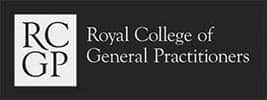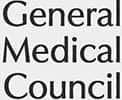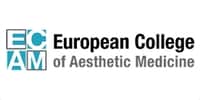Updated: 23 November 2023
After having a baby, if you are struggling with the significant changes you’ve experienced with your body, you may feel unhappy in yourself. Don’t be too hard on yourself — it can be difficult to adjust to a differently-shaped post-pregnancy body. You might also feel a sense of loss now your baby is no longer inside you and the other major life changes that come with parenthood.
Sagging belly skin after pregnancy is one of the most common concerns our clients want a non-surgical solution for. It’s only natural to have loose skin after pregnancy, and over time, skin can retract and become firm again. But because your abdomen has grown so quickly in such a short space of time, this could take many months or may not happen at all. We recommend waiting at least 12 weeks after giving birth to determine if loose skin is likely to become tighter and how stretch marks fade after pregnancy. This post explores the non-surgical and surgical options for treating loose skin and fat deposits after pregnancy. This information is intended for educational purposes only and should not be used as a substitute for a professional medical diagnosis, advice or treatment.
Factors that Impact Loose Skin after Pregnancy
The potential for developing loose skin after pregnancy depends on several factors:
Age — Collagen production decreases from around the age of 25, and your skin has significantly less elasticity by age 35. Subsequently, the younger you are when you give birth, the more likely your skin will retract and tighten, and you may not have a problem with sagging belly skin after pregnancy.
Genetics — Your genetics influence your collagen fibre turnover and collagen formation, which contribute to tightening skin and the degree to which skin retracts after being stretched.
Diet — There is evidence that a healthy diet can affect skin elasticity, and certain foods boost collagen production.
Weight loss — The amount of weight gained during pregnancy will also influence how much weight loss could result in loose skin. Rapid weight loss is a known cause of loose skin because your skin doesn’t have enough time to retract.
How to Lose Belly Fat After Pregnancy
But what about belly fat after pregnancy that you just can’t shift with diet and exercise?
Various methods of reducing belly fat exist after pregnancy. Choosing the right one will depend on your personal objectives and circumstances.
Aqualyx (Fat Dissolving) Injections
Aqualyx Injection Lipolysis can reduce belly fat or pockets of stubborn fat that may appear in areas such as the:
- Upper arms
- Hips
- Inner thighs
- Knees.
The effects of lipolysis treatment are noticeable and long-lasting. You’ll notice a reduction in the volume of fat in the area treatment within around four weeks following the first treatment. Injection lipolysis is a clinically proven, non-surgical body contouring treatment that is ideal if you require fat removal targeted at a particular region of your body.
Depending on the area treated, the amount of fat, and how your body responds to treatment, two to five sessions may be necessary. With substantial pockets of fat, treatments can be repeated at four to six weeks until you have obtained the desired results.
Saxenda (Weight Loss) Injections
It can be challenging to get your GP to consent to weight loss injections, but our CQC-registered clinic offers Saxenda weight loss injections in London without requiring a referral. Saxenda is a clinically proven medication that is one of the most flexible injection treatments for weight loss available in the UK, and it can be used at any time of day that works best for your daily schedule.
After pregnancy, it can be extremely difficult to eat a healthy, balanced diet. Saxenda weight loss injections can help you to fully commit yourself to eating a nutritious diet that will support your mental and physical well-being. Saxenda weight loss injections
regulate appetite and promote weight loss in the following ways:
- You experience greater control over which foods you consume and can make healthier decisions when you are not motivated by your feelings of hunger.
- A lesser amount of food will satisfy you, making it less challenging to follow a calorie-controlled diet plan.
- After eating, you’ll feel fuller for longer, which will help you avoid unhealthy snacks.
Although Saxenda is a clinically proven weight loss medication, weight loss is not guaranteed. While taking Saxenda weight loss injections, you will still need to follow a low-calorie diet and/or intensified exercise to experience weight loss.
To talk about non-surgical ways to reduce fat deposits and contour your body after giving birth, schedule a free consultation with Harley Street MD in London and share your goals.
Non-Surgical Body Contouring
Before undergoing cosmetic surgery, it is worth exploring alternative non-surgical body contouring treatments. These can be incredibly effective, and you may decide you don’t want or need to have surgery after all. The following non-surgical body contouring treatments can help to reduce fat deposits and the appearance of loose skin after pregnancy.
What Causes Loose Skin after Pregnancy?
Sagging belly skin after pregnancy is caused by loss of elasticity in the skin as a result of it being stretched relatively quickly throughout pregnancy. Stretch marks after pregnancy are also a result of this. Factors that can affect how much loose skin you have after pregnancy include the weight you gain during pregnancy, genetics, age, diet, and other external environmental factors.
Cryolipolysis (Fat Freezing) and Body Contouring
Many women have a problem with fat deposits on the belly area as well as loose skin after pregnancy. Although diet and exercise can help you to return to your ideal weight, that doesn’t necessarily mean you will lose fat from your abdomen.
The purpose of cryolipolysis, also known as fat freezing, is to sculpt and contour specific areas of your body. Any fat cell exposed to a temperature below -1°C will freeze and crystallise, causing permanent injury. The cell membranes disintegrate, which sets off an activity called apoptosis (programmed cell death). The body’s natural detoxification function will subsequently remove the expired fat cells.
Shockwave Therapy for Loose Skin after Pregnancy
Fat freezing targets fat cells to reduce fat deposits in areas such as the stomach, hips and upper thighs. However, loose skin can still be a problem. At Harley Street MD in London, we combine fat freezing with complimentary acoustic shockwave therapy as part of the cryolipolysis treatment.
Shockwave therapy uses soundwave energy to eliminate fat and cellulite more effectively, complementing the benefits of fat freezing. Radial pressure wave (RPW) pulses are sent into skin cells when the instrument moves over a designated region. Triglycerides, a type of fat called lipid, are drawn out of fat cells by 3D shockwave vibrations, which then direct them to the nearby lymphatic drainage system. Simultaneously, shockwave therapy increases blood flow to the skin, helping it to retract, significantly decreasing the visible signs of cellulite.
Microneedling for Stretch Marks after Pregnancy
Microneedling treatment is typically associated with the face, but it’s extremely effective in improving the appearance of skin anywhere on the body. Loose skin after pregnancy often goes hand in hand with stretch marks and can also be prone to cellulite. Microneedling encourages collagen and elastin renewal, which can help smooth and even out the skin, reducing the appearance of stretch marks and cellulite.
Schedule a free consultation with Harley Street MD in London to discuss your specific goals if you’d like to learn more about non-surgical ways to tone your body and reduce loose skin after pregnancy.
Cosmetic Surgery for Loose Skin after Pregnancy
Pregnancy takes a huge physical toll on a woman’s body. You should wait at least six months before having any type of cosmetic surgery to allow the body time to recover.
Various cosmetic surgery procedures can help reduce loose skin after pregnancy. The most common is to address sagging belly skin after pregnancy. This procedure is called an abdominoplasty, although it is most often referred to as a tummy tuck. Abdominoplasty surgery has serious associated risks and complications. Before booking a consultation, we recommend you check if your surgeon is a plastic surgeon listed on the GMC specialist register.
As with major surgery, there is a significant recovery process with abdominoplasty surgery, which, according to the British Association of Aesthetic and Plastic Surgeons (BAAPS), will take around six weeks. Heavy lifting should be avoided for two weeks, and most patients allocate an average of four weeks off work following this surgery. After the procedure, your abdomen will hurt and swell for several weeks or months. This can be especially difficult for new mums when looking after a baby.
Why Choose Harley Street MD in London?
The non-surgical techniques and treatments we have covered in this post are not without potential risks and drawbacks. These can be greatly decreased by choosing an aesthetics expert with extensive anatomy knowledge who is also medically qualified and trained.
Dr Chia Tan founded Harley Street MD, one of the UK’s only CQC-registered aesthetic clinics. Dr Tan is a well-known GMC-registered aesthetic doctor with numerous publications in scientific and medical journals. All injectable weight reduction injections and injectable aesthetic procedures at Harley Street MD in London are overseen by Dr Tan, who is also a member of the:
- Royal College of Surgeons (MRCS)











